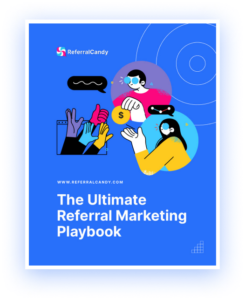What if you could grow your business without increasing your spending?
In fact, what if you could actually reduce your spending but increase your sales, year after year?
Would you do it?
If you’re a business owner, then you’ll likely give a resounding ‘yes’, a simple answer to an even simpler question.
As the old adage goes, work smarter, not harder, right?
The best and most cost-effective way to do this is to focus on your existing customer base with a solid customer rewards program.
A rewards program tracks and rewards certain spending behavior by the customer, providing special benefits to loyal customers who continue to shop with a certain brand. The more that the customer spends in the store, the more benefits they receive. Over time, this incentive builds loyal customers out of an existing customer base.
And if you can keep existing customers in your shop, then you won’t have to focus on bringing in new customers each month.
Even if you already have a reward program in place, it’s a good idea to dig in and fully understand what makes customer loyalty programs work, as well as how to implement one that costs you little money and time.
Don’t worry, I’ll help you with that.
I’ll break down the main benefits of a loyalty program and the best ways to create loyal customers. By the end of this article, you’ll feel relieved to know that you can easily and effectively improve the customer experience and increase sales in one self-managed loyalty program.
Let’s dig in.
Click to Jump
How Do You Define Customer Loyalty?
Customer loyalty is when a customer returns to do business with your brand over your competitors and is largely influenced by the positive experiences that the customer has with your brand.
The more positive the experience, the more likely they will return to shop with you.
Customer loyalty is incredibly important to businesses because it will help you grow your business and sales faster than a simple marketing plan that focuses on recruiting new customers alone.
In fact, a repeat customer spends three times more than a first-time buyer, and a loyal customer spends five times more.
A few ways to measure customer loyalty include:
- Net promoter score (NPS) tool. NPS tools either send a brand performance survey via email or ask customers for feedback while they are visiting a business’s website. This information can then be used to better understand the likelihood of customer loyalty.
- Repurchase ratio. A repurchase ratio measures the ratio of repeat purchasers versus one-time purchasers. This metric can then be used to estimate customer loyalty.
- Customer loyalty index (CLI). The CLI tracks customer loyalty over time and is similar to an NPS survey. However, it takes into account a few additional factors on top of NPS like upselling and repurchasing. These metrics are then used to evaluate brand loyalty.
What is a Customer Loyalty Program (and Why Does it Matter)?
A customer loyalty program is a marketing strategy that rewards customers who make purchases and engage with the brand on a continued basis. These rewards can include discounts, points redeemable toward purchase, free products, or even exclusive access to new products. Customer rewards programs are designed to incentivize future purchases. This encourages them to continue doing business with your brand.
Customer loyalty programs can be set up in many different ways. A popular customer loyalty program rewards customers through a points system, which can then be spent on future purchases. Another type of customer loyalty program may reward them with member-exclusive perks or free gifts, or it may even reward them by donating money to a charity that you and your customers are mutually passionate about.
Whatever the case may be, the basic concept is the same.
By offering rewards to your customers for being loyal and supportive, you’ll build a rapport with them, deepening their relationship with your brand – and hopefully making it less likely for them to switch to a competitor.
What are Benefits of a Customer Loyalty Program?
You’ve likely seen customer loyalty programs in your own shopping experience, whether at your favorite cafes or your most frequented grocery stores. Your competitors might be running loyalty campaigns, too – we keep a running list of successful brand loyalty programs.
But just because everyone is doing it doesn’t mean that’s a good enough reason for you to do it too.
The better you understand the benefits of a customer rewards program, the more clarity you will have as you create one for your own store. You won’t be distracted by exciting benefits and complicated loyalty points systems.
Instead, you will be able to create an effective rewards program that practically runs itself.
Remember: work smarter, not harder.
1. Customer Loyalty Programs Increase Customer Retention
Customer retention is the primary benefit of a rewards program that serves as a foundation to all of the other benefits. As you provide incentives for your existing customer base to continue to purchase from your shop, you will provide your shop with a steady flow of cash month after month.
This rate at which they return to your store is your retention rate.
By growing your retention rate, you can stop spending as much time or money on increasing your overall number of customers.
Why is this important?
Loyal customers have a higher conversion rate than new customers, meaning they are more likely to make a transaction when they visit your shop than a new customer.
Not only that, but they are also more likely to spend more per transaction. By increasing your retention rate by only 5 percent, you can increase your profits by 25 percent and as much as by 95 percent.
Needless to say, your retention rate matters.
2. A Loyalty Program Will Reduce Marketing Costs
Increasing your retention rate ensures that you’ve got loyal customers spending their hard-earned cash in your shop, month after month.
And you won’t have to spend money on marketing to get them there.
Customer acquisition (aka bringing in new customers) takes a lot of effort and money to convince complete strangers to trust your brand, come to your shop, and try your products. In the end, any cash earned by this new customer is overshadowed by all of the money spent on getting them there.
E-commerce businesses and brick and mortar retailers alike rely on repeat customers to grow their businesses as acquiring new customers is anywhere from five to 25 times more expensive than retaining your existing customer base.
3. Customer Loyalty is Natural (and Free!) Word-of-Mouth Marketing
When you focus on providing a positive personalized experience for your existing customers, they will naturally tell their friends and family about your brand.
And with each subsequent transaction, loyal customers will tell even more people per transaction. This is called word-of-mouth marketing and is an even more effective marketing strategy with higher conversion rates than traditional marketing alone.
The best part?
Because these new customers came from trusted sources, they are more likely to turn into loyal customers themselves, spending more on average than new customers brought in by other marketing efforts.
The Chase Ultimate Rewards program, for example, offers major perks for people who travel a lot. Though Chase is a credit card company that virtually has nothing to do with travel, it capitalizes on the interests of its target audience (people who spend money on big items, like flights, hotels and resorts) by offering rewards to cardholders who spend money on these items with their Chase card.

The ‘ultimate rewards’ that Chase cardholders receive include 2x points per dollar spent on all travel purchases as well as primary rental car insurance, no foreign transaction fees, trip cancellation insurance, and purchase protection.
You can also book your next group trip with a charter bus and earn loyalty points for free rides!
For people who travel a lot—and have disposable income to do so—there is a massive incentive to spend cash through the ultimate rewards program.
Because the more that you spend, the more types of rewards that can be redeemed.
This entire process makes redeeming rewards something worth bragging about, which is exactly what many cardholders end up doing. And to help them do it, Chase offers a bonus for that too.

How Do You Start A Customer Loyalty Program?
Starting a customer loyalty program depends largely on how well you understand your customers and what will motivate them to return to your shop. Once you get the basics down, then using a loyalty rewards app can help take care of the technical details.
Here are the steps to get started with creating your customer loyalty program.
1. Know Your Customers – And Give Them What They Want
No customer wants to buy products they don’t want or need. The same goes for your loyalty program.
So your reward program has to be so tantalizingly good that they can’t possibly pass it up.
And the only way to tailor an irresistible customer loyalty program is by intimately knowing your customer base.
The best way to do this?
By implementing these strategies:
- Build customer contact information wherever possible. Ensure your business is constantly building a detailed contact list that allows you to access existing customers as often and as easily as possible. This will facilitate an easy launch of marketing campaigns, creating greater insight into who is interacting with your brand and why.
- Track customer behavior. Know what your customers want and when they want it. In doing so, you can anticipate their wants and needs and provide them with a loyalty program that will satisfy them.
- Categorize customer personal traits and preferences. Take a multi-faceted approach, don’t limit your loyalty program to just one avenue of success. By understanding your different customers’ personal preferences, you can start to tailor your program to suit as many customers as possible.
- Encourage social media engagement. Frame strategies to engage with your customers and target audience on social media. They will soon provide you with very insightful feedback on your products and services, allowing you to better understand what they expect from your brand.
2. Decide Which Customer Loyalty Program Type Is Best For You
Once you have worked out who your customers are and why they are doing business with your brand, it’s time to decide which type of loyalty rewards program will encourage them to remain loyal to you.
This is unique to every brand and is only limited by your imagination. However, the most common customer loyalty programs centralize around these main concepts:
- The points program. This type of program focuses on rewarding customers for every purchase they make with points in a point system. These points can then either be used on future purchases or put towards some form of reward. Generally, the more points that you have, the greater the reward.
- The paid program. This type of program requires customers to pay a one-time or annual fee to join your VIP list. Loyalty members who belong to this list are able to access unique rewards or member-exclusive benefits.
- The charity program. This type of program is a little different than the others. Instead of incentivizing future purchases through a rewards system, it aims to leverage shared values that both customers and a brand share. This is achieved by encouraging them to do business with the brand and, in return, their loyalty will be rewarded with a contribution to a charity.
- The tier program. This type of program concentrates on increasing levels of brand loyalty. The more loyal a customer is to a brand, the higher tier they will climb to and the better the rewards they will receive.
- The partner program. This type of program is just as it sounds, where one brand partners with another brand to provide their collective audiences with exclusive member discounts or offers that they can redeem while doing business with either brand.
- The community program. This type of program incentivizes brand loyalty by providing its members with access to a like-minded community of people.
- The subscription program. This type of program is fairly similar to paid programs, however, the subscription fee occurs on a regular basis rather than a one-time payment.
3. Choose What Customer Behaviour You Want To Reward
Next, choose which customer interactions you’d like to reward. Base these rewards around which interactions benefit your business the most.
For example, to help your business out, you can offer action-based rewards like these:
- Reward customers more when doing business with your brand during a slow period of the year or on a notoriously slow day of business.
- Reward customers for referring new customers.
- Reward customers for engaging with your brand on social media.
- Incentivize certain products you are trying to move quickly.
- Incentivize purchases that are over a certain dollar amount.
4. Use A Customer Loyalty Software
The idea is to make your customer loyalty program as easy as possible for your customers to use.
If your customer loyalty program isn’t staff friendly, isn’t easy to track, is too expensive to run, or isn’t easy for your customers to use or understand, then staff and customers alike probably won’t take advantage of it. These are called ‘barriers to entry’ and can seriously block any success that your loyalty program might otherwise have.
To eliminate these barriers to entry, consider integrating a customer loyalty software that will help you keep on top of all of these aspects of your program.
Some quality customer program software include:
- CandyBar. CandyBar is a digital punch card program. It works by tracking your customer’s purchases through an app on a computer, phone, or tablet. Basically, customers input their phone number and receive a digital “stamp” on their account as they do business with your brand. Loyalty members can then check their rewards via text message and business owners can use the program to contact their customers.
- Yotpo. Yotpo is a cloud-based customer loyalty platform exclusively for eCommerce businesses. This software is particularly good at collecting every type of user-generated content, helpful for tailoring a better customer experience.
- Loopy Loyalty. Loopy Loyalty is a handy customer loyalty software for businesses that predominantly use Google Wallet or Apple Pay as their payment platforms. The software creates a digital loyalty card that sends push notifications to their customers’ phones when they are in close proximity to their brick and mortar store.
5. Start The Sign-Up Process
Once you’ve taken the time to decide which customer loyalty strategies you are going to implement, it’s time to start promoting and signing up your first loyalty members.
Promote your loyalty program like you would any other product. Use in-store advertisements, integrate call-to-actions on your website, send out promotions via email newsletters, or upload promotional posts on social media to get your customers to join.
5 Ways to Keep Customers Coming Back
It’s important to understand the main benefits of a customer rewards program so that you can create a personalized experience for both you and your customer.
And the more personalized the experience is, the more loyal your customers become.
Think about it.
You know what kinds of items your customers like to buy but do you know what brings them back, day after day, week after week? What makes them choose your shop over the shop across the street?
What makes them your customer and not the customer of your biggest competitor?
Surprisingly, the answers to these questions don’t come down to discount prices or quality products.
So how do you do it?
By keeping them engaged. Customer engagement creates loyal customers more than flash sales, fancy products, or expensive marketing campaigns. It is what builds an emotional connection between the customer and your brand, making them much more likely to be loyal to your store over other stores they’re not engaged with.
Engagement is the way that you build a lasting customer relationship that will stand the test of time (and economic drama).
There are a lot of ways to encourage customer engagement, but I’ll focus on the most effective.
1. Offer More Than Just a Discount
Many loyalty campaigns fall flat because all they offer is a simple discount based on a spending limit. Though people love discounts, they’re pretty easy to find online thanks to the advent of technology and the ability to immediately download coupons.
Instead, let your loyalty points offer more than a quick discount.
Starbucks, for example, has an entire mobile app dedicated to their loyalty program. By earning loyalty points, their customers can get free refills in store, get a free drink on their birthday, and order ahead so that they don’t have to wait in line.
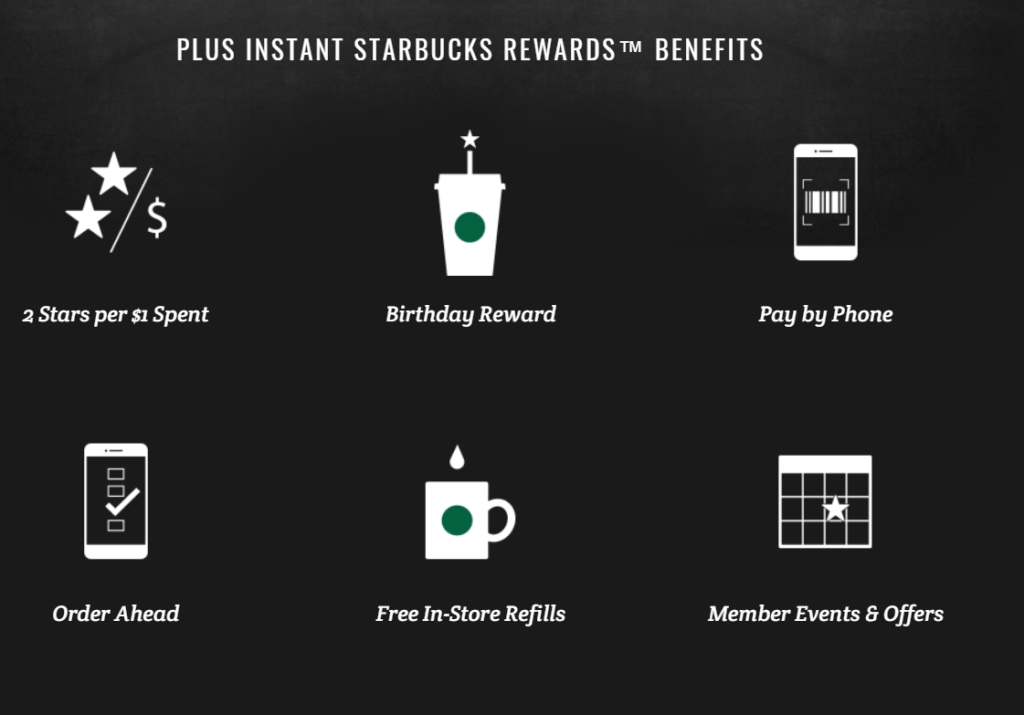
Starbucks’s loyalty program is a billion-dollar business
These kinds of perks are especially popular among millennials, who are obsessed with immediate return and convenience.
And considering that millennials are responsible for $600 billion in spending each year, it makes sense for any business to cater to them (whether you like ’em or not).
2. Tap Into The Brain With Gamification
There is a major reason why people remain loyal to romantic partners or their favorite sports teams and it has very little to do with what they think they feel about them.
Instead, it has to do with the brain.
Romantic love taps into the addiction and rewards centers of the brain just like sports teams trigger a tribal survival mechanism in the brain. With each, you find an unbreakable loyalty that is hard to explain with reason or logic.
In a similar way, you can develop this kind of loyalty in your customers by tapping into certain brain structures that are far more powerful than your competitor’s impressive digital ad.
This is most easily done with gamification.
By making a game out of any experience, you can directly influence a person’s personal motivation to complete a task (like, say, shopping at your store). This is especially useful when it comes to loyalty programs that allow people to earn rewards through certain actions, such as using a rewards credit card on certain products or reaching a certain membership level within the rewards program.
The easiest way to do this is through a straight-forward points-based system.
You’ve likely seen it already with airline loyalty programs that let you earn free flights with your frequent flyer miles or hotel loyalty programs that let you redeem your points in the way of a free night at one of their partner hotels and resorts.
The other most common forms of gamification that exist in rewards programs come in the form of:
- Redeemable Points – This type of program allows you to earn points as you spend with the option to redeem your points anytime.
- Badges – Many programs offer badges for completing certain tasks or challenges, such as following a 30-day challenge or spending a certain amount of money in a certain time period. Just like earning stickers in elementary school motivates children to perform or behavior better, so do badges in rewards programs.
- Performance Graphs – If you want your customers to become invested in a challenge or game that you’ve created out of your rewards program, the ability to track progress through the program will serve as incredible motivation to continue their engagement over time.
- Leaderboards – For people who are inherently competitive, a leaderboard serves as tremendous motivation to perform better and complete challenges for the chance to be publicly displayed on the leaderboard. When paired with the ability to earn bonus points, leaderboards work as incredible incentives for customers to increase their engagement with your brand.
Jillian Michaels taps into gamification with her fitness app, offering badges for certain tasks completed and performance graphs for ongoing performance tracking.
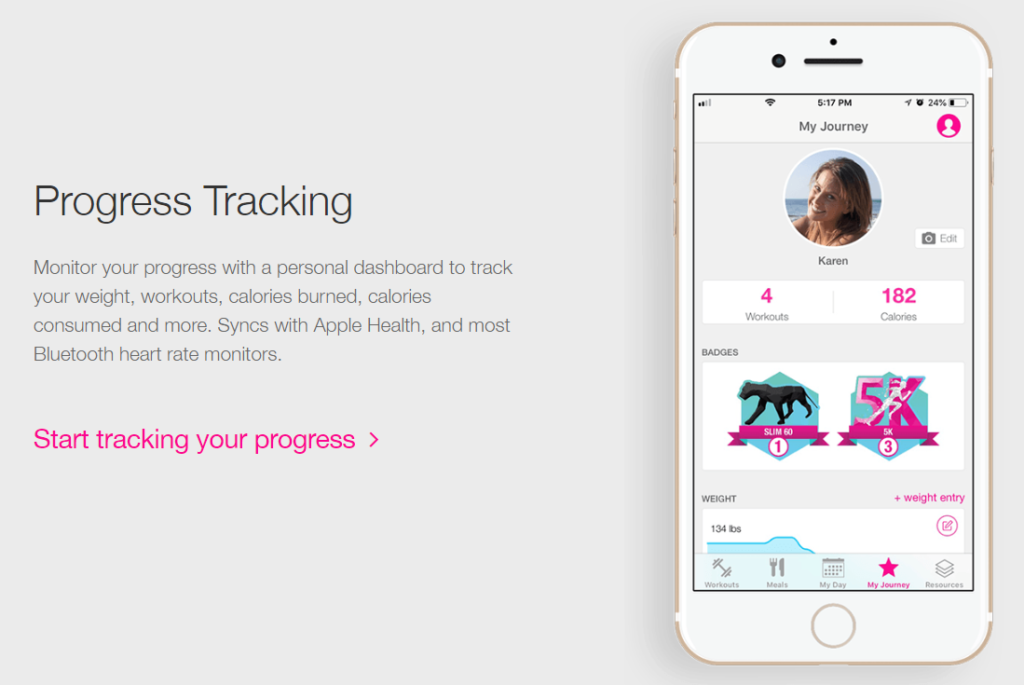
By providing both of these within her app, she is incentivizing engagement and increasing the likelihood that her customers will continue to pay her monthly subscription fee.
Read Also: Gamification is pretty potent – Red Robin’s Royalty program makes a game out of offering free burgers.
3. Provide Deeper Meaning and Connection
A rewards program that offers perks can certainly attract new customers, but one that takes a stance on important social issues is more likely to build loyalty in consumers than perks alone.
In a world that is constantly changing and with global anxiety rising at alarming rates, people are searching for more opportunities to participate in social programs that give back in meaningful ways.
Not only will your customers enjoy the perks that you offer them but they will also feel connected to the social issues that they are indirectly supporting. By providing a meaningful connection to your rewards program, you are able to increase customer retention and commitment over the long-term.
Considering that nearly two-thirds of customers are more willing to shop with brands who offer such a program than with those that do not, it’s a worthy strategy in increasing your customer retention rate.
Lyft’s Round-Up program allows users to round-up their fares and donate to a cause of their choosing. The entire process is automated within the mobile app so that users can develop a meaningful connection with the brand with a single swipe of the finger.

4. Keep It Simple With A Digital Loyalty Program
With all of the fun and innovative loyalty and rewards programs that exist, it’s easy to be tempted to add layer after layer to your own customer loyalty program. Unless you have the bandwidth to run a complex rewards program, though, it’s best to keep it as simple as possible.
After all, if your customers don’t understand how it works, they’re going to be less compelled to participate.
The easiest way to do this is with a loyalty card program that is automatically run within a mobile app. Loyalty reward apps, like Candybar, for example, work as a digital loyalty card that allows customers to accumulate points with both online retailers and brick-and-mortar retailers within an easy-to-use app.
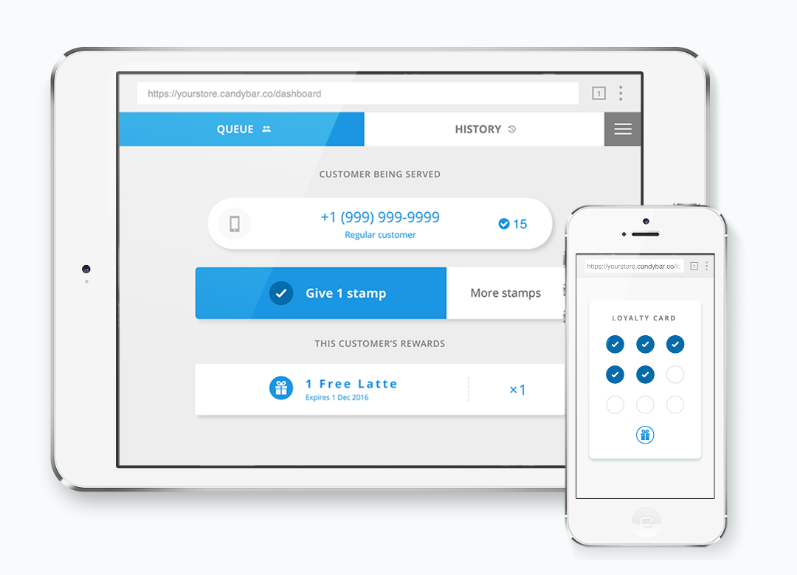
Just like a traditional punch card, customers can redeem rewards as they accumulate points earned by shopping at their favorite businesses. The loyalty program software makes it easy to set up for any small business so that the repeat customer only needs to enter their information into the rewards app to earn points for their purchase.
The best part about a digital loyalty program?
Because everything is managed within the rewards app, you can review the customer data to help improve your business. You can track spending behavior to learn when your customers are most likely to shop, which products they are most likely to buy, and which rewards and incentives are most likely to bring them back into your shop.
5. Consider Partnering With Other Businesses
Even if you are running a robust loyalty program, you will still want to bring in new customers whenever possible. The easiest way to do this without blowing cash on expensive marketing campaigns is to partner with other local businesses that share your same target market but aren’t your direct competition.
Ideally, you will find another business that serves the same demographic as you so that their current customers will naturally have an interest in your brand. When this business recommends your brand through the joint loyalty program, it will work a lot like word-of-mouth marketing as that business already has established customer relationships.
And we know how valuable word-of-mouth marketing is (see above).
How to Measure the Success of Your Rewards Program
Now that you’ve gone through all of the effort to set up a customer loyalty program, it’s incredibly important to make sure that it was all worth while.
After all, if you set up a rewards program in order to improve brand loyalty by your customers and, consequently, improve sales, wouldn’t you want to make sure that you were actually successful in doing so?
Luckily, there are a few easy ways to measure the success of your loyalty rewards program.
Look At Your Customer Retention Rate
Your customer retention rate tells you how long a customer continues to shop with you. This is important because the longer the customer lifetime, the more profits your company will make.
While there are many fancy ways to break down retention metrics, the easiest way to do it is to simply compare the behavior of your customers enrolled in the loyalty program with those who are not. Monitor how often both groups return to your shop and how much they spend per visit.
This will quickly and clearly tell you if your retention efforts were successful or not.
Look At Your Customer Churn Rate
While increasing customer retention is super important in measuring the success of a loyalty program, it’s not necessarily where the magic happens. If you want to really get into the nitty-gritty of retention metrics, then you will want to break down your customer churn rate.
The rate at which customers stop shopping at your store is your churn rate. Your negative churn rate, on the other hand, is the rate at which they upgrade or increase their purchasing behavior, both of which will help offset natural customer churn that comes with running a business.
If you can offset the customer churn while also increasing overall retention, then you’re in a position to increase your profits by up to 95 percent.
Give a Satisfaction Survey
If you really want to know how your loyalty program is serving your existing customers, then ask them!
It really is that simple.
You will learn valuable insight simply by providing a customer satisfaction survey. Pay attention to what they say were their favorite parts of the shopping process and what the major pain points of the process were. If your eCommerce store has its own mobile app, you can also use mobile app surveys to collect precious feedback.
Then, capitalize on the highlights and fix the pain points.
One simple way to measure this is with the Customer Effort Score, which effectively measures how easy or difficult it was for the customer to complete a purchase.
While you certainly want to provide perks and benefits to your customers, understanding their pain points will help you create brand loyalty just as much because nearly 50 percent of customers with a negative experience are likely to tell 10 or more people about it.
So it’s best to find those negative experiences and nip them in the bud right away.
Final Thoughts
Creating a customer loyalty program doesn’t need to be a massive project. When it is done well and it is customized to the customer experience, though, it can reap major benefits for your business. If you’re not sure where to begin, consider asking your current customer base what they would want to see in a rewards program with a simple customer survey. Once you know what they want, then you will have clear direction on what will bring them back to your store.
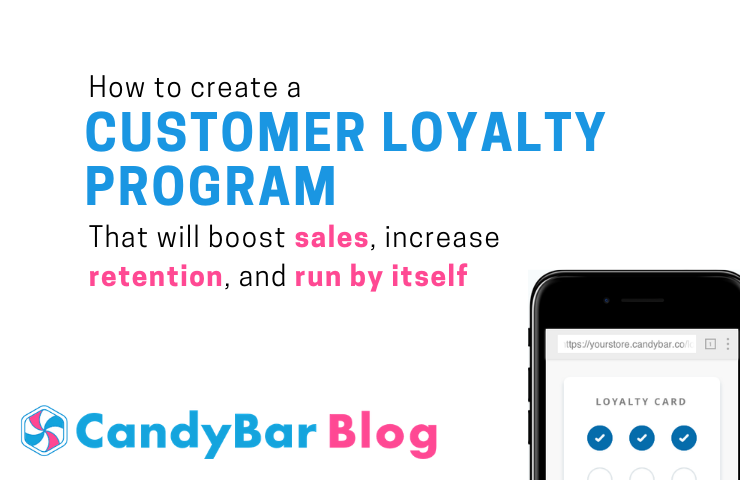
Psst — looking for an effective digital loyalty program? Try Candybar free for 30 days. We’re confident you’ll buy it.


